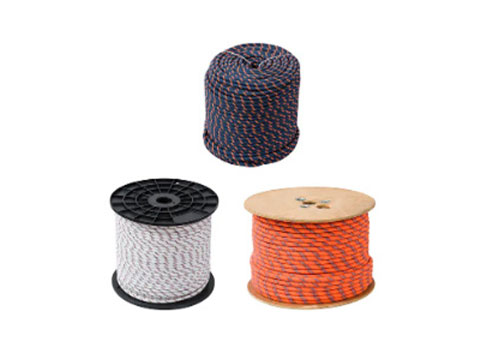
The Basics of Braided Rope
There are two primary types of deformation in a Braided Rope: instantaneous deformation and delayed deformation. Instantaneous deformation occurs immediately upon application of a load, while delayed deformation is not recoverable until the force is released. Instantaneous deformation occurs immediately upon application of a load and is caused by the first cycle of a cyclic load. Both of these deformations are temporary.
The ropemaking process is an art, and Leonardo da Vinci even drew sketches of a mechanical device to produce rope. Rope is used in many notable construction feats, such as erecting the 327 ton obelisk in Rome in 1586. It was a feat of engineering in itself, involving 900 men, 75 horses, and countless pulleys. A few working machines were created in the 18th century, and although most rope is still made from natural fibres, synthetic materials have become popular since the 1950s.
The main use for braided rope is in marine contexts. Watercraft are almost always pushed by currents. These currents are powerful and variable. Thus, mooring ropes need to be strong enough to resist constant pulling. Apart from this, braided ropes are exposed to moisture and harsh weather conditions. These characteristics make braided ropes ideal for marine environments. But before buying any rope, make sure it meets the performance standards required for your application.
To make the ends of a rope smooth and clean, you should place a separator between the core and the sleeve. This will prevent the strands from tying together. Usually, the core of the rope contributes to the strength and flexibility of the product. Hence, it is crucial to protect the core and sleeve. This will prevent herniation and ensure that the product is durable.
Polypropylene rope is popular for general industrial and rigging purposes and is tough. It is often used to tie down boats in marine applications. Apart from that, it can also be used in dock rigging and even for simple household chores. Though it is often mistaken for nylon, the two ropes have some differences, so it is important to consult a rope expert before buying. For instance, polypropylene rope can withstand chemicals, whereas nylon rope is susceptible to static electricity charges.
The process of making rope requires three or more strands. Each strand should be about five/32 inches in diameter. A number greater than this will make the rope thicker and stronger. Moreover, a single strand with a single yarn should be counted as one strand. For better understanding of the manufacturing process, check if the material is polymer. The polymer that creates ropes is a long chain of molecules called polymers.
Compared to twisted rope, braided ropes are tougher and have a better performance under different loads. The principle of braiding rope was discovered by prehistoric humans long before science had the chance to investigate it. Nowadays, we use braided rope in a wide range of applications in industrial settings, as well as in our homes. Braided rope is available in different varieties: single braid, double braid, and even kernmantle.
Kernmantle braided rope for climbing
Kernmantle braided rope constructed with its interior core (the kern)protected by a woven exterior sheath (mantle) designed to optimize strength, durability, and flexibility. The core fibers provide the tensile strength of the rope, while the sheath protects the core from abrasion during climbing and other use.Braided strands can be customized.It is often used as climbing rope.
